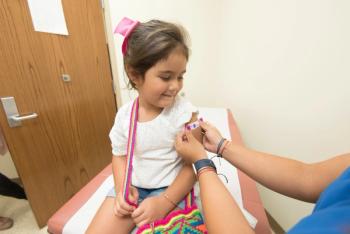This surveillance study, led by researchers with the CDC and Prevention's Emerging Infections Program (EIP), found that carbapenem-resistant Enterobacterales (CRE) infections occur less frequently than extended-spectrum beta-lactamase-producing Enterobacterales (ESBL-E) infections in US children. While most US studies have focused on the prevalence and epidemiology of these multidrug-resistant pathogens in adults, nationwide data on children are lacking.
Surveillance conducted from 2016 to 2020 at 10 US sites focused on carbapenem-resistant Enterobacterales (CRE), while surveillance from 2019 to 2020 at 6 US sites targeted extended-spectrum β-lactamase–producing Enterobacterales (ESBL-E). Among 159 CRE cases in children, predominantly isolated from urine (82.4%) and blood (12.6%), the annual incidence rate ranged from 0.47 to 0.87 cases per 100,000 population.
“Over a 5-year surveillance period, representing >4 million children, resulting in an overall crude incidence of 0.70 cases/100,000 pediatric population. The CRE case estimate is lower than the 207-incident pediatric ESBL-E cases identified over 1.5 years across 6 EIP sites (>600,000 children), which corresponds to an average crude incidence of 23.08 cases/100,000 pediatric population.”
3 Key Takeaways
- The study highlights a notable difference in the occurrence of CRE and extended-spectrum beta-lactamase-producing ESBL-E infections among children in the United States, with ESBL-E infections being more prevalent.
- Rates of both CRE and ESBL-E infections were found to be significantly higher among infants compared to other age groups, underscoring the vulnerability of this demographic to multidrug-resistant infections.
- The study underscores the urgent need for targeted interventions to control the spread of multidrug-resistant infections among pediatric populations, emphasizing the importance of ongoing surveillance and prevention efforts.
Similarly, among 207 ESBL-E cases in children, mainly isolated from urine (94.7%) and blood (3.9%), the annual incidence rate was 26.5 in 2019 and 19.63 in 2020. Rates of CRE and ESBL-E were over 2-fold higher among infants compared to other age groups. Most CRE and ESBL-E cases were healthcare-associated community-onset (43.0% for CRE vs. 23.7% for ESBL-E) or community-associated (27.2% for CRE vs. 64.5% for ESBL-E).
“Most CRE and ESBL-E cases in our study were healthcare-associated infections with community-onset or were community-associated infections. Strikingly, nearly 65% of the ESBL-E cases were reported to be community-associated, and patients had no reported history of healthcare exposure,” according to investigators.
Inherent limitations in surveillance systems for CRE and ESBL-E include varying case definitions reliant on locally performed susceptibility testing, potentially leading to inconsistent results due to differing laboratory methods. Automated testing instruments in clinical laboratories might tend towards overdiagnosing CRE. Additionally, retrospective data abstraction from medical records introduces variability in reporting quality across healthcare systems and facilities, particularly as maternal information was not included, potentially limiting the identification of household risk factors. Incomplete case reporting, especially noted in ESBL-E cases, and reliance on convenience sample isolates may not fully represent all cases. Limited data on sequence types due to incomplete sequencing of isolates further impacts comprehensive analysis. Lastly, the surveillance system's geographical diversity does not ensure full representation of the entire US pediatric population.
“Our findings highlight a similar shift in the clinical epidemiology of multidrug-resistant infections in children, supported by a rising trend in community-acquired ESBL-E causing urinary tract infections in children,” according to the investigators. “Continued implementation of national programs to detect, prevent, and treat multidrug-resistant infections must increasingly include pediatric populations and outpatient settings.”
The study underscores the importance of including pediatric populations, especially infants, and outpatient settings with efforts to detect, prevent, and treat multidrug-resistant infections.
Reference
Grome H, Grass J, Duffy N, et. al. Carbapenem-Resistant and Extended-Spectrum β-Lactamase–Producing Enterobacterales in Children, United States, 2016–2020. Emerging Infectious Diseases. 2024;30(6):1104-1114. doi: 10.3201/eid3006.231734



























































































































































































































































































































